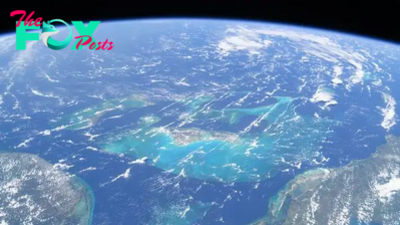Science
Ancient viral genomes plucked from glaciers reveal how pathogens have adapted to Earth's shifting climate
As humans alter the planet's climate and ecosystems, scientists are looking to Earth's history to help predict what may unfold from climate change. To this end, massive ice structures like glaciers serve as nature's freezers, archiving detailed records of past climates and ecosystems — including viruses.
We are a team of microbiologists and paleoclimatologists that studies ancient microorganisms, including viruses preserved within glacier ice. Along with our colleagues Lonnie Thompson, Virginia Rich and other researchers at the Ice Core Paleoclimatology group at The Ohio State University, we investigate interactions between viruses and their environment archived in ice cores from the Guliya Glacier on the Tibetan Plateau.
By linking the genomes of ancient viral communities to specific climate conditions preserved in glacier ice, our newly published research offers insights into how these viruses have adapted to Earth's shifting climate over the past 41,000 years.
Reading history in viral genes
We primarily used metagenomes — collections of genomes that capture the total genetic content of all microorganisms present in environmental samples — to reconstruct viral genomes from nine distinct time intervals within the Guliya ice core. These time horizons span three major cold-to-warm cycles, providing a unique opportunity to observe how viral communities have changed in response to different climatic conditions.
Through our analyses, we recovered the genomes of the equivalent of 1,705 virus species, expanding known glacier-preserved ancient viruses more than fiftyfold.
Only about one-fourth of the viral species we found shared species-level similarities with any of the viruses identified in nearly 1,000 metagenomes previously captured in global datasets. Most of these overlapping species were also from the Tibetan Plateau. This suggests that at least some viruses preserved in the Guliya Glacier originated locally in the region, but it also spoke to the relative lack of glacial viruses in available databases.
Using these new reference genomes, we attempted to "read" their stories.
-

 Science15h ago
Science15h agoGiant underwater avalanche decimated Atlantic seafloor 60,000 years ago, 1st-of-its-kind map reveals
-

 Science1d ago
Science1d agoSpaceX Falcon 9 rocket grounded for 2nd time in 2 months following explosive landing failure
-

 Science1d ago
Science1d agoJames Webb telescope spots 6 enormous 'rogue planets' tumbling through space without a star
-

 Science2d ago
Science2d agoLarge patch of the Atlantic Ocean near the equator has been cooling at record speeds — and scientists can't figure out why
-

 Science2d ago
Science2d agoGravitational waves hint at a 'supercool' secret about the Big Bang
-

 Science3d ago
Science3d ago200 meteorites on Earth traced to 5 craters on Mars
-

 Science3d ago
Science3d agoScientists collect high-resolution images of the North Star's surface for 1st time
-

 Science3d ago
Science3d agoSupercharged 'cocoon of energy' may power the brightest supernovas in the universe






















